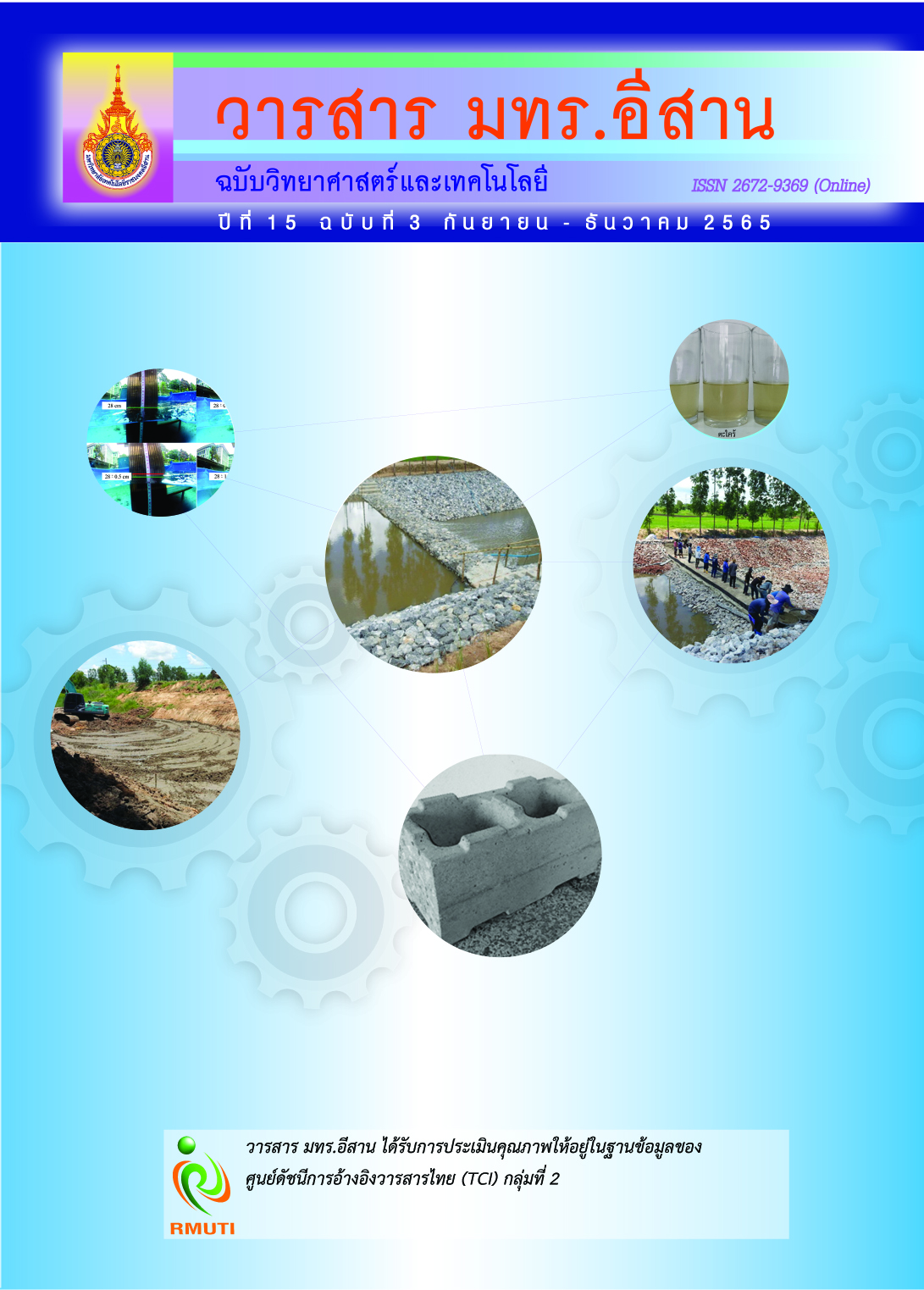Compressive Strength Behavior of Clay Admixed Cement Under the Different Curing Conditions
Main Article Content
Abstract
This study investigated the unconfined compressive strength of cemented clay under soaked and unsoaked conditions. The concept of the study was the use of a soil-cement core zone for check dam construction. The check dam needs fast construction and must be immediately soaked in water after the end of construction. Influential factors of this study were cement content, water content, soaked/unsoaked conditions and curing times. The cement contents were 15, 20 and 25 % by weight of dry soil. The moisture contents were 80, 100 and 120 % of optimum moisture content. The study results indicated that unconfined compressive strength increased with an increase in curing time for all mixing ratios. The lower clay- water/cement ratio resulted in an increase in unconfined compressive strength. The results of soaked and unsoaked conditions showed that soil-cement samples in soaked conditions had lower compressive strength than those in unsoaked conditions. However, soil-cement samples in soaked conditions had more yield strength and ductility than soil-cement samples in unsoaked conditions. The effect of the initial soaked condition resulted in the clay-water/cement ratio increase in the unconfined compressive strength of samples in soaked condition lower.
Article Details

This work is licensed under a Creative Commons Attribution-NonCommercial-NoDerivatives 4.0 International License.
References
Katkan, W., Kumpala, A., and Horpibulsuk, S. (2008). An Approach for Assessement of Compaction Curves of Soils at Various Energies Using A One Point Test. RMUTI JOURNAL. Vol. 1, No. 2, pp. 15-31 (in Thai)
Na Nongkhai, P., Phojan, W., Pongnam, T., Chamchong, B., and Konyai, S. (2017). Core Zone Soil Cement Check Dam for Water Resource Management. International Conference on Engineering and Natural Science-Summer Session. Supporo Japan. August 23-25, 2017, pp. 88-99
Horpibulsuk, S., Rachan, R., Papattanotai, S., and Nagaraj, T. S. (2006). Analysis of Strength Development of Cement Stabilized Clay from Microstructural Consolidations. In Proceeding International Symposium on Lowland Technology. Saga, Japan, pp. 115-120
Jindapon, S., Yimsiri, S., Soralump, S., and Mitaim, S. (2006). Cement and Lime Stabilization of Soil in Submerged Condition. Kasetsart Engineering Journal. Vol. 20, No. 59, pp. 52-60 (in Thai)
Corp of Engineer. (1956). Summary Reviews of Soil Stabilization. In Proceeding, No. 13, Soil-Cement, Miscellaneous Paper, No. 3-122. Water Experiment Station, Vicksburg, p. 38
Portland Cement Association. (1969). Soil-Cement Construction Handbook. Construction Inspection Field Control. p. 11
Ingles, O. G. and Metcalf, J. B. (1972). Soil Stabilization Principles and Practice. Sydney. Butterworth PTY., p. 200
Clare, K. E. and Pollard, A. E. (1954). The Effect Of Curing Temperature On the Compressive Strenght Of Soil-Cement Mixtures. Geotechnique. Vol. 4, Issue 3, pp. 97-107. DOI: 10.1680/geot.1954.4.3.97
Horpibulsuk, S., Miura, N., and Nagaraj, T. S. (2003). Assessment of Strength Development in Cement - Admixed High Water Content Clay with Abrams Law as a Basic. Geotechnique. Vol. 53, Issue 4, pp. 439-444. DOI:10.1680/geot.2003.53.4.439


